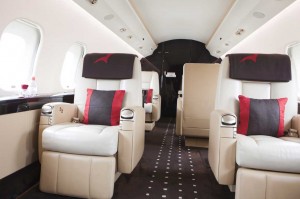Warren Buffett once quipped that, considering how unprofitable commercial airlines have proven, investors in aviation should have shot Orville Wright at Kitty Hawk in the early 1900s. However, there might be somebody who can prove this famous quip wrong. Thomas Flohr, owner of the company VistaJet, is not a mass consumer airline by any stretch of the imagination, with prices starting at around $9,500 for just an hour of flight time. However, VistaJet has been able to make profits in each of the ten years since it first opened, a notable achievement in such a highly volatile industry. VistaJet claims that it’s the world’s fastest growing private aviation company in a market that includes NetJets, Buffett’s own private jets investment. Last year, VistaJet placed what they claim is the biggest order in business aviation history: a $7.8 billion agreement with Bombardier for 56 aircraft options of a further 86. VistaJet currently employs 500 people. Headquartered in Zurich, it has bases in London, Frankfurt, Beijing, Moscow, Lagos, Dublin, Hong Kong, Malta and New York. Altogether, it has 42 planes, all painted silver with a red stripe. The company doesn’t issue detailed turnover or profits figures, but he says that turnover increased 27 percent just last year, after VistaJet flew 27,000 passengers on 11,000 flights to 137 countries.
Flohr first entered the private airline business due to frustration due to lack of an available product that was simple and physically available on a consistent basis. He didn’t feel that whatever was available in the marketplace was worth the price. Flohr had used private jets in the past, and saw the business opportunity that they offered. While you could be in three different cities in one day, Flohr was frustrated that he never knew what he was paying for until he arrived at the airport. He tried to join the fractional aircraft trend, but never received a satisfactory answer on what the share in a plane would be worth at the end of the agreement. While you were paying $30,000 for a flight, you were drinking cheap coffee out of a styrofoam cup, or getting cheese platters on plastic trays. So, at the end of 2003, he purchased his first plane and started hiring it out when he wasn’t using it. Soon, a second plane followed. After hiring some analysts, Flohr learned that it was a non-industrialized industry, with no consistent product or simple business model.
Against the logic of the industry, Flohr decided that his planes wouldn’t have a home base. Instead, they’re maintained at 40 Bombardier service centers around the world. Pilots who fly VistaJet are required to take commercial flights back, as all VistaJet flights are one-way. A lot of people were surprised by this choice, thinking that he didn’t understand how the industry worked. But Flohr kept asking questions, and wanted to disrupt and ultimately change the industry. In many ways, Flohr had excellent timing; globalization was starting, and emerging markets were demonstrating growth. The company expanded rapidly, and every airplane Flohr took delivery of was immediately fully booked. VistaJet had extremely simple contracts, and the product that he offered was consistent on a global basis. Five years after its founding, VistaJet purchased the Skyjet International fractional ownership business of Bombardier, which allowed it to cover all global markets, with the exception of the US. After the arrival of the financial crisis, Flohr reduced prices and deferred delivery of some of the planes. Despite this hiccup, VistaJet still grew revenues by 16pc in 2009. What was key about the success of VistaJet was that it was in an emerging market that continued to grow. Nobody else in the business was in an emerging markets, and a lot of the smaller charter operations disappeared.
